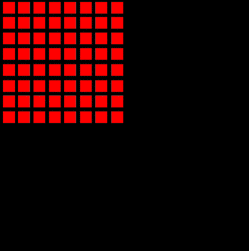In some embodiment, the uprendering achieves a higher resolution uprendered image. This uprendering can be applied to substantially any image to generate a higher resolution image, frame or the like. For example, the uprendering can be applied to legacy interactive electronic games, video content, digital photographs, and/or other such images. In some instances, the uprendering is applied to legacy PlayStation® electronic games that often generate frames having a resolution of [640×448]. Accordingly, the uprendering can be applied to increase the resolution of frames as the game is being played back to generate higher resolution images that can take advantage of displays and televisions with greater resolution and/or increased size that were available at the time the gaming titles were originally generated. As such, the uprendering allows images of PlayStation legacy gaming titles to be uprendered and displayed with higher definition graphics while still maintaining a correct emulation model of the original legacy hardware on which the titles were based. Additionally, in some embodiments, the uprendering through the cooperation of the reference image and the shifted images can retain the deterministic method of point-sampling that some image systems and/or legacy titles utilize to render correctly. Further, the uprendering provided through the coalescing of the reference image and the one or more shifted images often minimizes the introduction of artifacts, which are common to other methods of uprendering.


